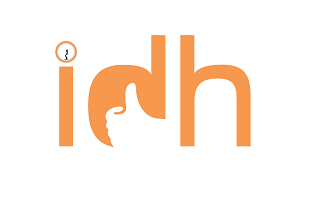The third class in this series was on the requirements for life safety and egress, excluding code requirements for electrified hardware.
Click here to download the Powerpoint presentation of the life safety and egress session.
To view the recording of the presentation, click here.
If you are taking the COR140 exam, you can download a practice exercise here.
Classification of Occupancy: It is critical that you are able to identify the occupancy classification (NFPA 101) or use group (IBC) for your project when trying to determine the code requirements. In some cases, there may be more than one occupancy type or use group in the same building. The occupancy classifications are listed and defined in Chapter 6 of NFPA 101, and examples of the most common buildings in each occupancy classification are listed in Annex A of NFPA 101. The use groups are listed and defined in Chapter 3 of the IBC, with some of the use groups further subdivided into subgroups. (Remember, the exam is based on NFPA 101-2009.) An article that includes basic information about occupancy classifications and use groups can be found here, and there is an exercise on classification of occupancy here .
Links to Life Safety and Egress Articles on iDigHardware:
Single Operation Egress
Roof Access and Egress
New Occupant Load Requirements for Panic Hardware
Manual Flush Bolts
Luminous Egress Path Markings
Breaking Tradition – New Requirements for Glazing
Panic Hardware on Electrical Rooms
Review:
[I recommend marking the locations of the answers to these questions in your copy of NFPA 101 and the IBC.]
1) A university lecture hall with an occupant load of 60 would be considered which NFPA 101 occupancy classification?
- a) Assembly
- b) Business
- c) Educational
- d) Mercantile
2) A small coffee shop with an occupant load of 30 would be considered which NFPA 101 occupancy type?
- a) Assembly
- b) Business
- c) Mixed
- d) Mercantile
3) A multiple occupancy where two or more occupancy types are intermingled is called a _________ occupancy.
- a) Mixed
- b) Separated
- c) Integrated
- d) Institutional
4) A multiple occupancy where two or more occupancy types are separated by fire resistance rated assemblies is called a _________ occupancy.
- a) Mixed
- b) Separated
- c) Integrated
- d) Institutional
5) The contents of most common buildings are classified by NFPA 101 as:
- a) Low Hazard
- b) Ordinary Hazard
- c) Medium Hazard
- d) High Hazard
6) NFPA 101 considers a building occupied when there are how many people inside?
- a) 1
- b) 5
- c) 10
- d) 100
7) In NFPA 101, the Means of Egress chapter is Chapter ________.
- a) 1
- b) 5
- c) 7
- d) 10
8) The portion of a means of egress that leads from the occupied portion of the building to the exit is:
- a) exit access
- b) exit passageway
- c) exit corridor
- d) exit enclosure
9) The portion of a means of egress between the end of the exit and the public way is:
- a) exit access
- b) exit passageway
- c) exit
- d) exit discharge
10) A stair enclosed by fire-resistant-rated construction and opening protectives to provide a protected path of egress travel is:
- a) exit access
- b) exit passageway
- c) exit
- d) exit discharge
11) A horizontal exit leads to:
- a) area of refuge
- b) public way
- c) exit discharge
- d) exit stairs
12) When measuring travel distance, start at the most remote point and measure in a natural path around furniture to which end-point?
- a) the beginning of the exit enclosure
- b) a horizontal exit
- c) the exit discharge
- d) any of the above
13) The portion of the exit access traveled before two distinct paths of egress become available is called:
- a) dead end corridor
- b) common path of travel
- c) travel distance
- d) horizontal exit
14) According to NFPA 101, doors must swing in the direction of egress in which of the following?
- a) when serving 50 people or more
- b) when opening into an exit enclosure
- c) when serving a high hazard contents area
- d) all of the above
15) NFPA 101 requires panic hardware for which occupancy types, when the occupant load is more than 100 people?
- a) Assembly
- b) Educational
- c) Day Care
- d) A & B
- e) A, B, & C
Answers: 1-a, 2-d, 3-a, 4-b, 5-b, 6-c, 7-c, 8-a, 9-d, 10-c, 11-a, 12-d, 13-b, 14-d, 15-e
Any questions or comments, leave them in the box below.
